Hebrew: מיש דרומי, Arabic: ميس, Mays
| Scientific name: | Celtis australis L. | |
| Common name: | European Nettle tree, Lote tree, European Hackberry | |
| Hebrew name: | מיש דרומי | |
| Arabic name: | ميس, Mays | |
| Plant Family: | Ulmaceae, מישיים |
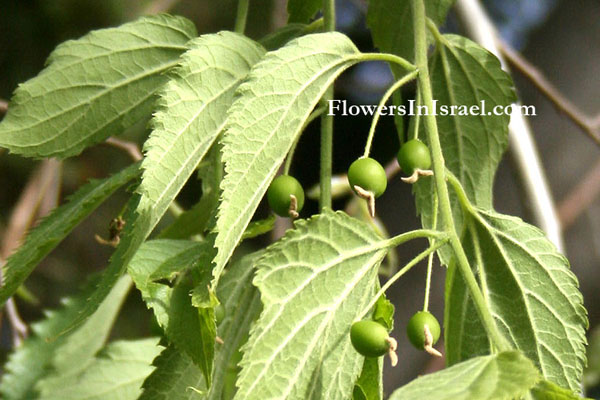
|
| Life form: | Tree | |
| Stems: | Deciduous tree; to 20 m by 10 m at a medium rate; smooth, gray bark develops corky warts and rideges as it matures | |
| Leaves: | Alternate, entire,lanceolate to ovate- lanceolate, sharply serrate, rough on top, and furry underneath | |
| Inflorescence: | Flowers male and hermaphrodite, appearing with the leaves on the young growth | |
| Flowers: | Green, inconspicuous; perinth-segments free, anthers yellow | |
| Fruits: | Drupe, globose, glabrous, fleshy, brownish-black when ripe, endocarp strongly reticulate-rugose; the edible fruit are dark purple and hang on stalks over an inch long | |
| Flowering Period: | March, April | |
| Habitat: | Mediterranean maquis and forest | |
| Distribution: | Mediterranean Woodlands and Shrublands, Montane vegetation of Mt. Hermon | |
| Chorotype: | Mediterranean | |
| Summer shedding: | Perennating |
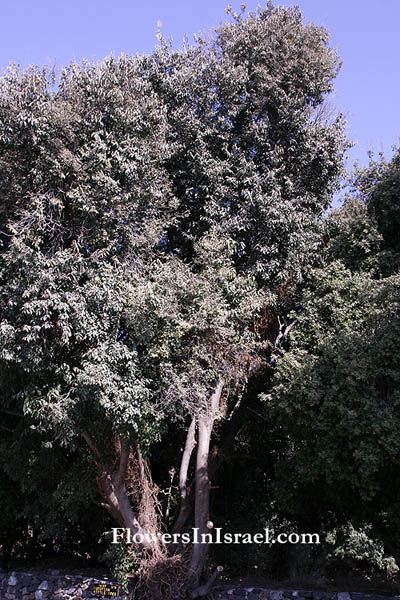
Location: Golan, Banias Derivation of the botanical name: Celtis, Greek name for some other tree.Celthis is the Latin name used by Pliny, (book XIII.xxxii), and is also the ancient Greek name for one of the plants reputed to be the lotus of the ancients. australis, southern.
…"I was driven thence by foul winds for a space of nine days upon the sea, but on the tenth day we reached the land of the Lotus-eaters, who live on a food that comes from a kind of flower. Here we landed to take in fresh water, and our crews got their mid-day meal on the shore near the ships. When they had eaten and drunk I sent two of my company to see what manner of men the people of the place might be, and they had a third man under them. They started at once, and went about among the Lotus-eaters, who did them no hurt, but gave them to eat of the lotus, which was so delicious that those who ate of it left off caring about home, and did not even want to go back and say what had happened to them, but were for staying and munching lotus with the Lotus-eaters without thinking further of their return; nevertheless, though they wept bitterly I forced them back to the ships and made them fast under the benches. Then I told the rest to go on board at once, lest any of them should taste of the lotus and leave off wanting to get home, so they took their places and smote the grey sea with their oars…" Herodotus (c.490-c.425 BCE),The Histories, c. 430 BCE, Book IV: "A promontory jutting out into the sea from the country of the Gindanes is inhabited by the Lotophagi, who live entirely on the fruit of the lotus-tree. The lotus fruit is about the size of the lentisk berry, and in sweetness resembles the date. The Lotophagi even succeed in obtaining from it a sort of wine. The sea-coast beyond the Lotophagi is occupied by the Machlyans, who use the lotus to some extent, though not so much as the people of whom we last spoke." Theophrastus (370 — about 285 BCE), Enquiry into Plants,IV, III: "The lotos- the whole tree is peculiar, of good stature, as tall as a pear tree, or nearly so; the leaf is divided and like that of the kermes-oak, and the wood is black. There are several sorts, which differ in their fruits; the fruitis as large as a bean, and in ripening like grapes it changes its colour; it grows, like myrtle-berries, close together on the shoots; to eat, that which grows among the people called the Lotus-eaters is sweet pleasant and harmless, and even good for the stomach; but that which has no stone is pleasanter (for there is also such a sort), and thay also make wine of it. The tree is abundant and produces much fruit; thus the army of Ophellas, when it was marching on Carthage, was fed, they say, on this alone for several days, when the provisions ran short. It is abundant also on the island called the island of the Lotus-eaters; this lies off the mainland at no great distance; it grows however in no less quantity, but even more abundantly on the mainland..." 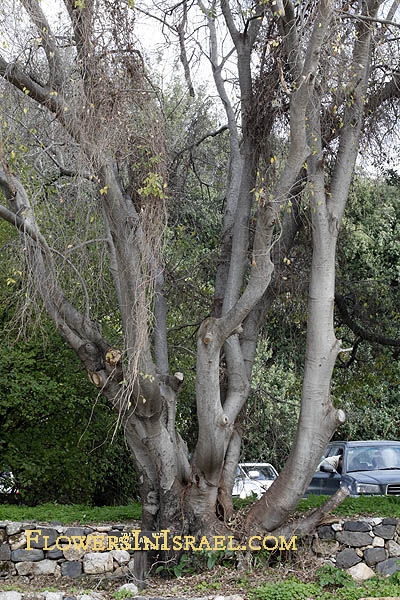
Location: Golan, Banias, Hermon Stream Nature Reserve 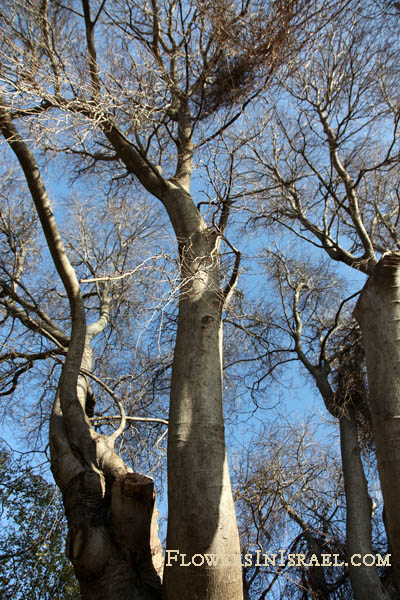
Location: Golan, Banias, Hermon Stream Nature Reserve 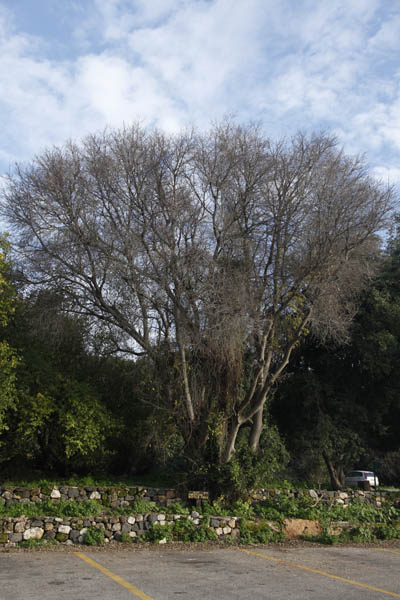
Location: Golan, Banias, Hermon Stream Nature Reserve |